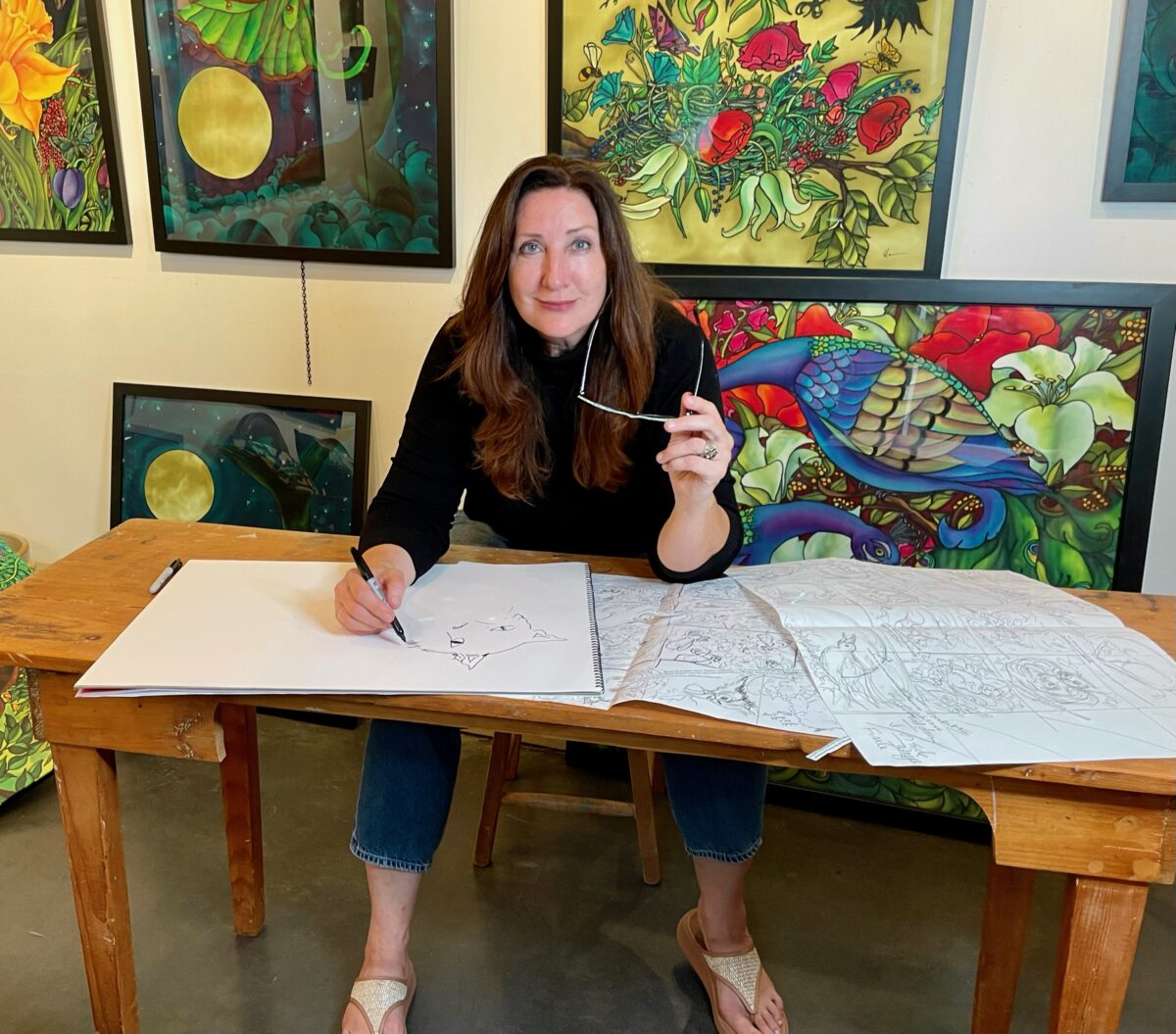New trail in Portapique aims to bring solace and healing after tragedy

The tall and mighty oak tree has long symbolized strength and endurance, and provided protection to those who take shelter beneath it.
An oak tree is the main character, serving as healer and protector, in Holly Carr’s forthcoming book, The Comfort Tree. It’s a children’s story that will resonate with readers of all ages, and along the way help with the healing process in Portapique, the place from where, in April 2020, a gunman launched the deadliest shooting rampage in Canadian history.
“This story is being written in collaboration with the people of Portapique, and it will be dedicated to the community,” the Nova Scotia author and artist says. “It’s a gentle and hopeful message — things are going to be OK.”
Laminated pages from The Comfort Tree will be attached to wooden stakes along a new trail in Portapique as part of the Story Trails Project. It will create an interactive experience to generate safe discussion around the topics of fear, anxiety and hope.
“It’s a whimsical story about the origins and life of the tree, and the animals that find ways to take comfort there,” Carr explains.
There is now a wealth of scientific research on the intersection of art, nature and mental well-being. Practices like art therapy and forest bathing confirm that the emotional outlet of art — and the calming effects of the natural world — can help dial down the physical sensations of trauma, while creating new neural pathways and perceptions.
Much of Carr’s recent work has centered around these connections between healing and nature. It was about six years ago that she began a collaboration with the Canadian Mental Health Association, which had some funding from the Nova Scotia Department of Health and Wellness for a Story Trails project spanning the entire province.
“Story Trails is about building resiliency, coping skills and all the things surrounding mental health literacy,” says Karn Nichols, executive director of CMHA, Nova Scotia. “So we were looking for a community where we could really direct the energy of this project.”
Carr already had the story idea and a general outline for her next book, and she and Nichols realized that Portapique would be a perfect fit for the first installation of Story Trails.
The Comfort Tree will be the latest chapter in the community’s recovery. Alana Hirtle is among a group of residents who came together in the wake of the tragedy to form the Portapique community build-up project.
“It’s about looking forward and rebuilding community spirit,” says Hirtle. “It’s also about leaving a legacy for the children by turning something horrible into something positive.”
Over the last three-and-a-half years, residents have rolled up their sleeves, cleared brush, swung hammers, spread mulch and laid sod. A new playground was completed in October 2021, and a new community hall — which will have dining space for about 100 people, a commercial kitchen, accessible washroom, office and workshop space —is scheduled to open in December. A farmers’ market has been active on the site since June 2022.
The timing was fortuitous when CMHA approached the build-up committee last year with the Story Trails idea. Writing a comforting story against the backdrop of a traumatic event involved working closely with the Portapique community, Carr says, and being aware of the sensitivities.
“The book is not about the tragedy,” she says. “It’s about where we go from here.”
With projected completion date of June 2024, the trail will form a loop around the hall, providing an interactive experience, with QR codes producing animal sounds, a narrator reading along, and take-home educational resource material. Carr plans to set aside a space at the end of the book for readers to draw pictures and write down the things they find comforting.
“Kids and parents can talk about how we can soothe ourselves, and make ourselves feel better when things are scary,” Carr says. “Finding patterns of thought and ways to soothe yourself is a very important part of mental wellness.”
As the seasons pass and the tiny acorn becomes a mighty oak, it provides shelter and comfort to a range of animals. Bees, rabbits, foxes, ravens and owls all avail themselves of the tree in a variety of ways. The squirrel can store his acorns here, bees harvest nectar and the bear can scratch its behind on it.
“The story begins in daylight and ends at night,” Carr points out. “But it’s a night that is safe, beautiful and comforting.”
If you are interested in learning more about this project you can contact Holly through her website www.hollycarr.com or check out www.lightintheforest.ca. For information on the Canadian Mental Health Association (Nova Scotia) and its role in supporting communities in times of stress, review novascotia.cmha.ca. Details on the Portapique community hall project is available at www.portapiquehall.com and www.facebook.com/portapiquehall.



